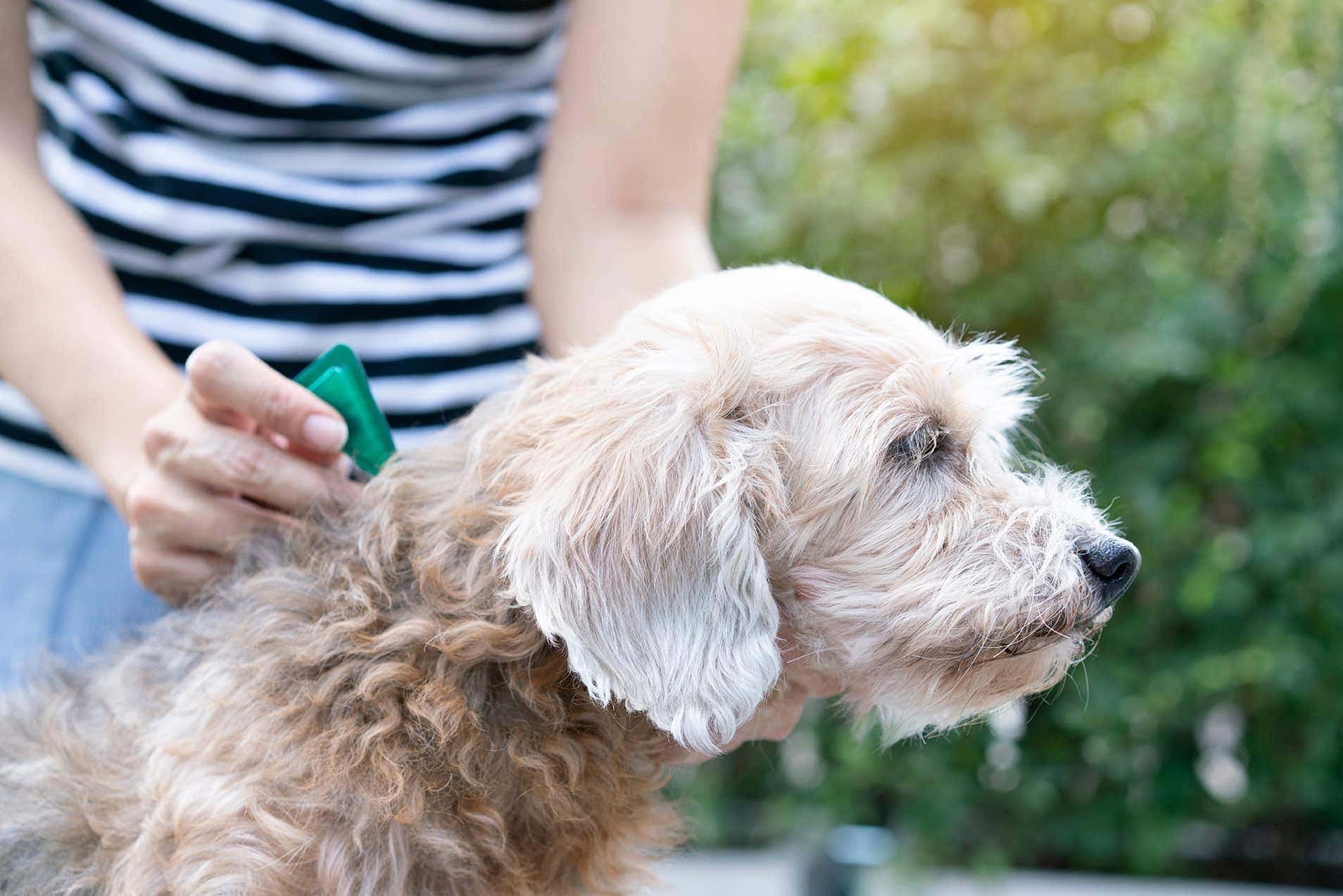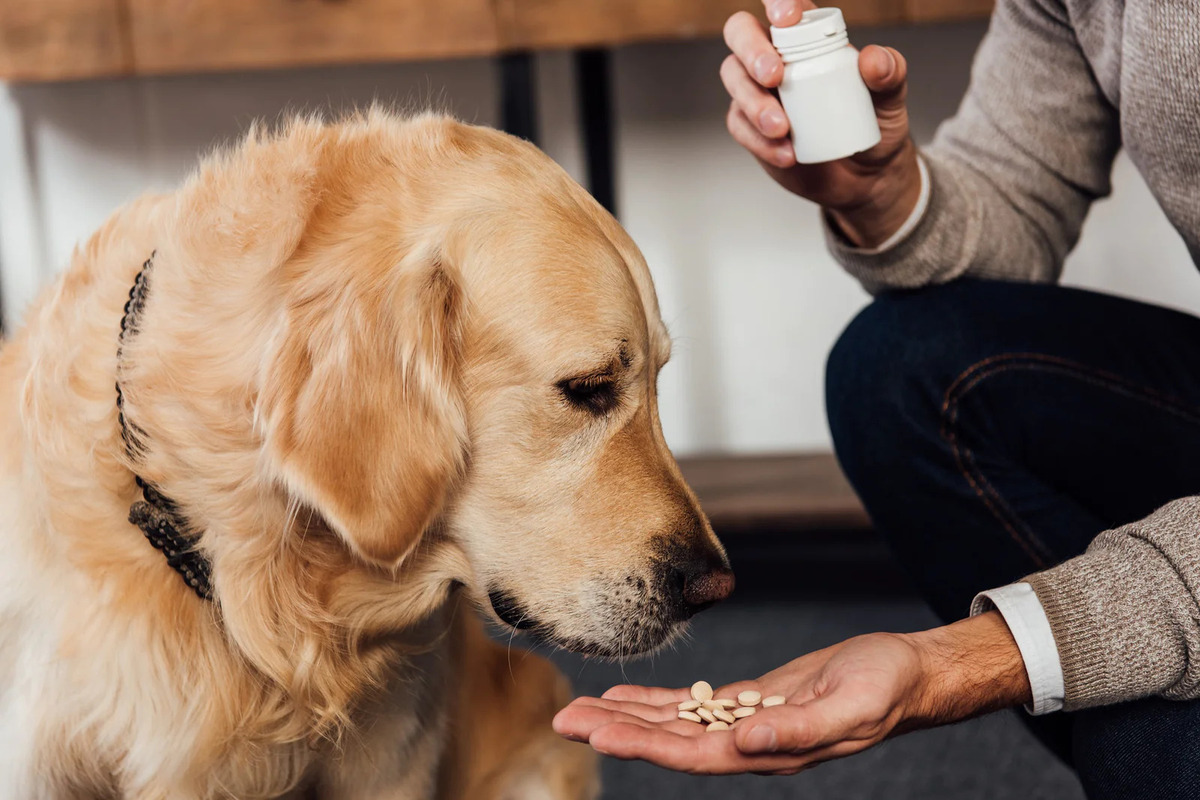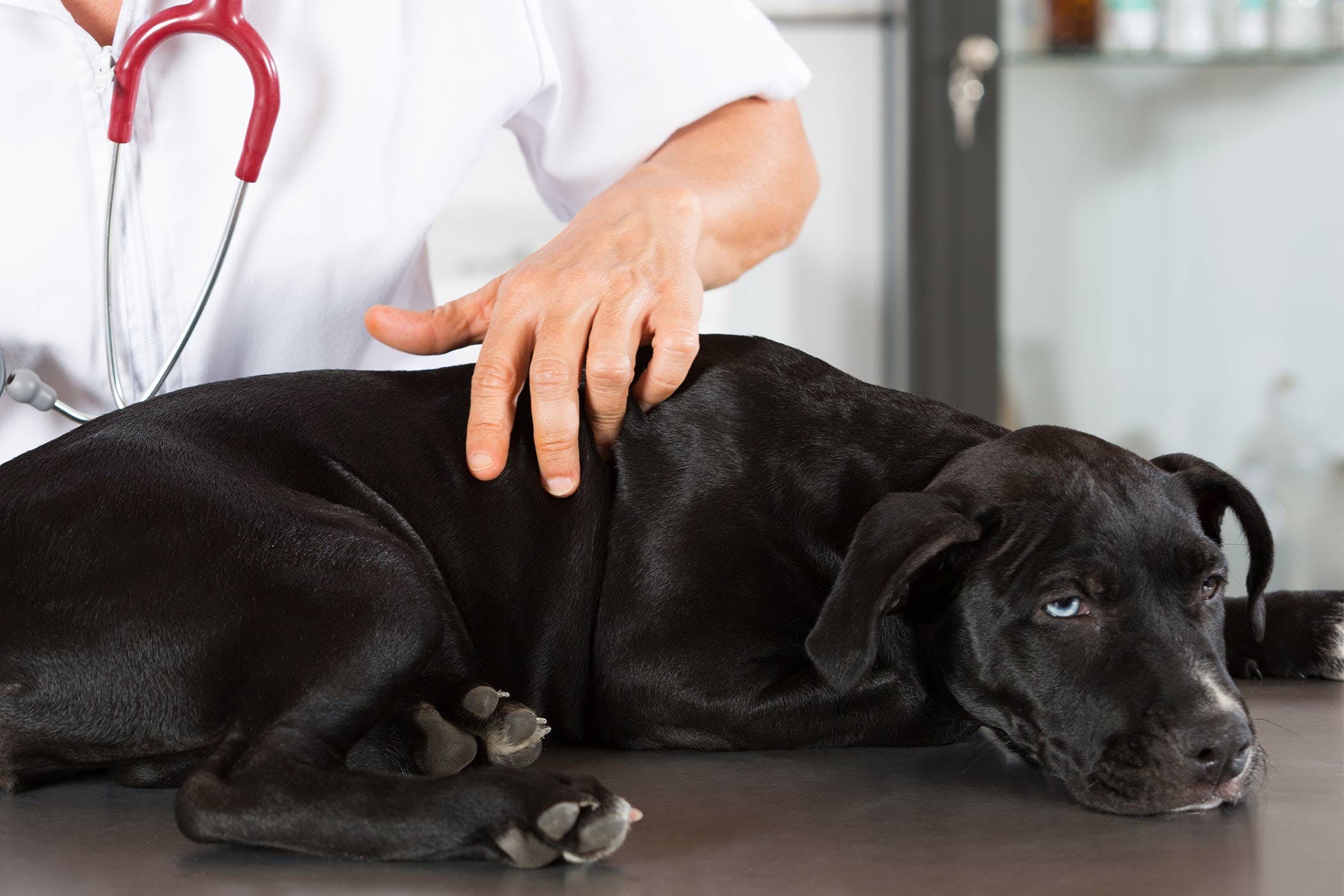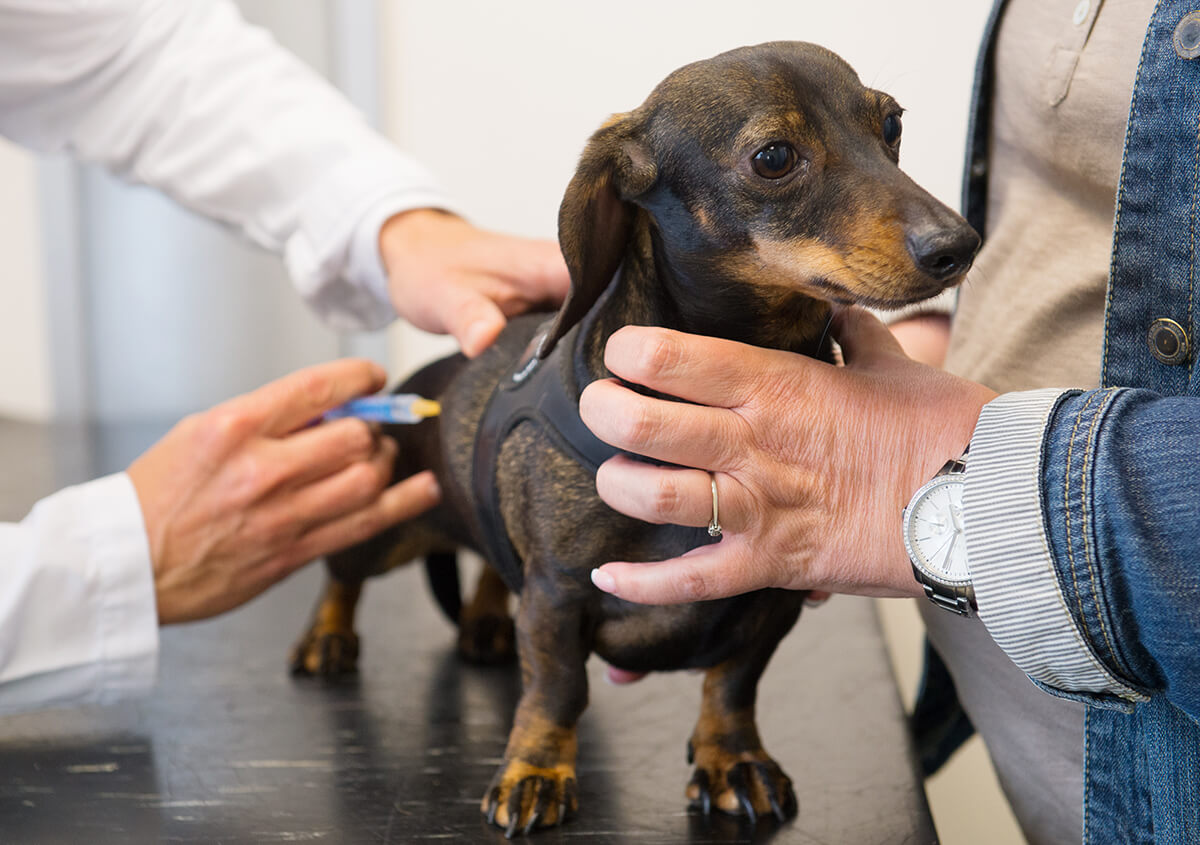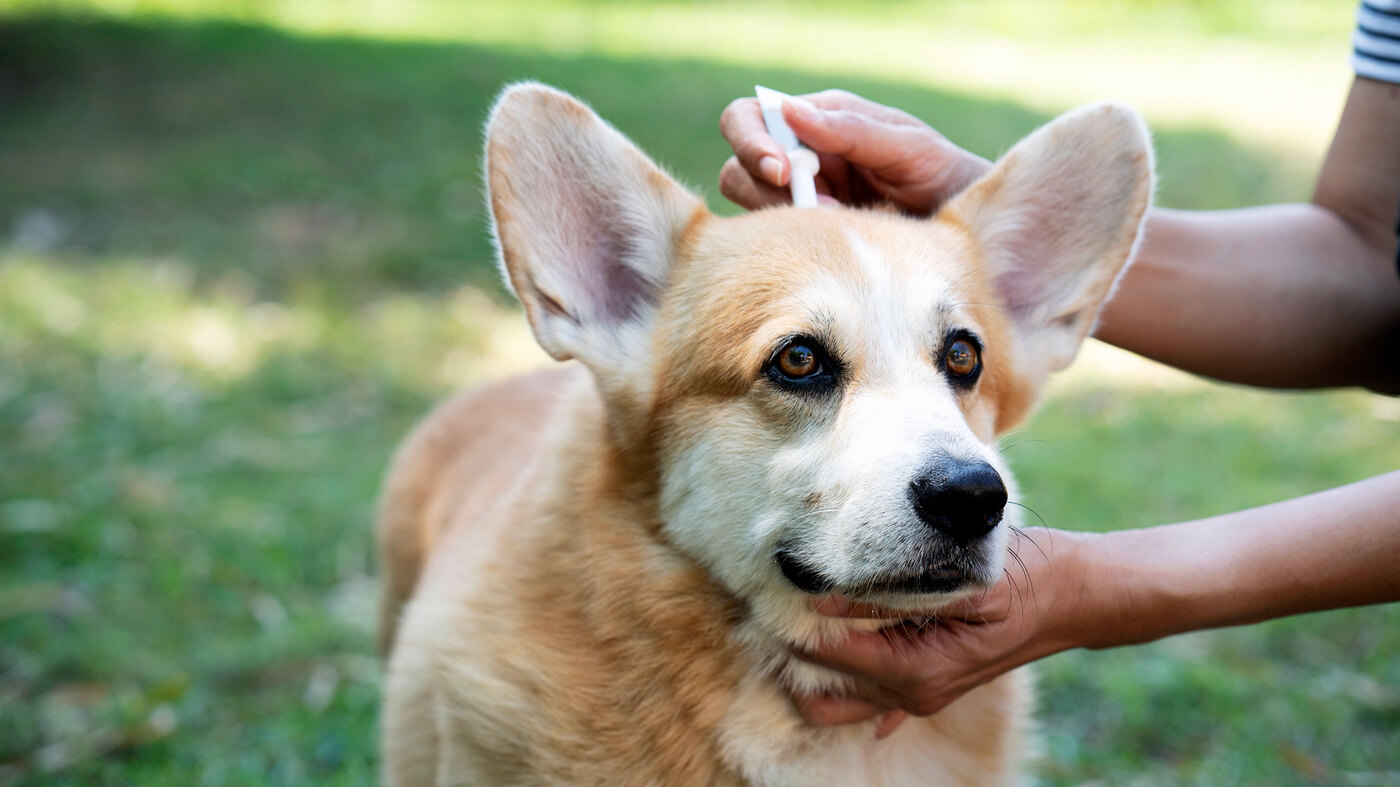Home>Health & Wellness>Common Health Issues>How Often To Wash A Dog With Allergies


Common Health Issues
How Often To Wash A Dog With Allergies
Modified: February 21, 2024
Learn how to manage common health issues in dogs with allergies, including how often to wash them for optimal care. Expert tips and advice for pet owners.
(Many of the links in this article redirect to a specific reviewed product. Your purchase of these products through affiliate links helps to generate commission for Pawsomeoldies.com, at no extra cost. Learn more)
Table of Contents
Introduction
When it comes to our furry companions, ensuring their well-being is a top priority. However, for dogs with allergies, maintaining their health can be a bit more challenging. Allergies in dogs can manifest in various ways, including skin irritation, itching, and discomfort. As a responsible pet owner, it's crucial to understand the unique needs of a dog with allergies and take proactive measures to alleviate their symptoms.
Allergies in dogs can be triggered by a myriad of factors, such as environmental allergens, food sensitivities, or even contact with certain substances. These allergies can cause significant discomfort for our canine friends, leading to incessant scratching, redness, and skin inflammation. As a result, it's essential to address these issues promptly and effectively to ensure our furry companions lead happy and healthy lives.
In this comprehensive guide, we will delve into the intricacies of caring for a dog with allergies, specifically focusing on the frequency of bathing. By understanding the factors that contribute to a dog's allergies and the best practices for bathing them, you can provide the necessary care and support to alleviate their discomfort. Let's explore the nuances of dog allergies and uncover the optimal bathing routine to keep our beloved pets feeling their best.
Read more: How Often Do Dogs Get Rabies Vaccinations
Understanding Dog Allergies
Dog allergies can be a source of significant discomfort for our furry companions, impacting their overall well-being. Allergies in dogs can manifest in various forms, including skin irritation, itching, and inflammation. It's essential to recognize the common triggers of dog allergies to effectively manage and alleviate their symptoms.
Environmental Allergens
Environmental allergens, such as pollen, dust mites, and mold, can provoke allergic reactions in dogs. When dogs come into contact with these allergens, whether through inhalation or skin contact, it can trigger a range of allergic responses. Dogs may exhibit symptoms such as itching, scratching, and skin redness as their immune systems react to these environmental triggers.
Food Sensitivities
Just like humans, dogs can also develop food sensitivities or allergies. Certain ingredients in commercial dog food, such as grains, dairy, or specific proteins, can elicit allergic reactions in some dogs. Food allergies in dogs can lead to digestive issues, skin problems, and overall discomfort. Identifying and eliminating the allergen from the dog's diet is crucial in managing food-related allergies.
Contact Allergens
Contact with certain substances, such as certain fabrics, cleaning products, or grooming materials, can also trigger allergic reactions in dogs. These contact allergens can cause skin irritation, redness, and itching upon exposure. Identifying and minimizing the dog's contact with these allergens is essential to prevent allergic reactions.
Seasonal Allergies
Similar to humans, dogs can experience seasonal allergies, often in response to pollen and other outdoor allergens. During certain times of the year, dogs may exhibit heightened allergic symptoms, including sneezing, itching, and watery eyes. Understanding the seasonal patterns of allergies can help pet owners anticipate and manage their dog's symptoms effectively.
By gaining a deeper understanding of the various triggers of dog allergies, pet owners can take proactive measures to minimize their dog's exposure to allergens and alleviate their discomfort. This knowledge forms the foundation for implementing effective strategies to manage and mitigate the impact of allergies on our beloved canine companions.
Factors to Consider
When determining the optimal bathing frequency for a dog with allergies, several crucial factors come into play. Understanding these factors is essential in tailoring a bathing routine that effectively addresses the specific needs of the dog while mitigating allergic reactions.
Severity of Allergies
The severity of the dog's allergies is a pivotal consideration when establishing a bathing schedule. Dogs with mild allergies may require less frequent bathing, while those with more pronounced symptoms might benefit from more frequent bathing to alleviate skin irritation and remove allergens from their coat.
Type of Allergens
Identifying the specific allergens that affect the dog is paramount. Whether it's environmental allergens, food sensitivities, or contact allergens, knowing the primary triggers allows pet owners to implement targeted bathing practices. For instance, dogs with pollen allergies may require more frequent bathing during peak pollen seasons to minimize exposure.
Read more: How Often To Give Dog Dental Chew
Skin Sensitivity
Understanding the dog's skin sensitivity is crucial in determining the frequency of baths. Some dogs have more sensitive skin that can become irritated with frequent bathing, while others may benefit from regular baths to soothe their skin. Tailoring the bathing frequency to the individual dog's skin needs is essential in preventing further discomfort.
Coat Type
The type of coat the dog has also influences the bathing regimen. Dogs with longer or thicker coats may require more frequent bathing to prevent matting and remove trapped allergens, while dogs with shorter coats may need less frequent baths. Additionally, certain coat types may be more prone to trapping allergens, necessitating a more meticulous bathing routine.
Allergy Management Plan
Incorporating bathing into the overall allergy management plan is vital. Bathing should complement other strategies such as dietary adjustments, allergen avoidance, and medication. Understanding how bathing fits into the broader allergy management approach ensures a holistic and effective care plan for the dog.
By taking these factors into account, pet owners can tailor a bathing regimen that is specifically suited to their dog's unique needs, effectively managing allergies and promoting overall well-being. Understanding the interplay of these factors empowers pet owners to make informed decisions regarding their dog's bathing routine, ultimately contributing to a happier, healthier, and more comfortable furry companion.
Frequency of Bathing
Determining the optimal frequency of bathing for a dog with allergies is a crucial aspect of their care regimen. While regular bathing can help alleviate allergic symptoms and remove allergens from the dog's coat, it's essential to strike a balance to prevent skin irritation and maintain the coat's natural oils.
Read more: How Often To Bathe A Dog With Fleas
Mild Allergies
For dogs with mild allergies, a bathing schedule of once every 4-6 weeks may be sufficient to maintain cleanliness and minimize allergen exposure. This frequency allows for the removal of environmental allergens and other irritants without overly stripping the coat of its natural oils. Additionally, using a gentle, hypoallergenic shampoo can help soothe the skin and reduce allergic reactions.
Moderate to Severe Allergies
Dogs with moderate to severe allergies may benefit from more frequent bathing to alleviate symptoms and manage allergen exposure. In such cases, a bathing frequency of once every 2-4 weeks may be more appropriate. Frequent bathing can help reduce itching, remove allergens, and soothe irritated skin. However, it's crucial to use a moisturizing shampoo specifically formulated for sensitive skin to prevent dryness and further irritation.
Seasonal Considerations
During peak allergy seasons, such as high pollen periods, adjusting the bathing frequency can be beneficial. Dogs prone to seasonal allergies may require more frequent baths to remove pollen and other outdoor allergens from their coat. In these instances, bathing once every 1-2 weeks during allergy peaks can help minimize allergic reactions and provide relief for the dog.
Individualized Approach
Ultimately, the optimal bathing frequency for a dog with allergies is highly individualized. Factors such as the dog's specific allergens, skin sensitivity, and coat type should inform the bathing schedule. Observing the dog's response to bathing and monitoring any changes in allergic symptoms can guide adjustments to the bathing frequency, ensuring that it effectively supports the dog's comfort and well-being.
By tailoring the bathing frequency to the dog's unique needs and considering the severity of their allergies, seasonal variations, and individual sensitivities, pet owners can establish a bathing routine that effectively manages allergies while promoting skin health and overall comfort for their beloved canine companion.
Tips for Bathing a Dog with Allergies
Bathing a dog with allergies requires a thoughtful and gentle approach to minimize allergic reactions and promote skin health. Here are essential tips to ensure a positive bathing experience for your furry companion:
-
Use Hypoallergenic Shampoo: Opt for a high-quality, hypoallergenic shampoo specifically formulated for sensitive skin. These shampoos are designed to be gentle on the skin, free from harsh chemicals, and help alleviate allergic reactions.
-
Thorough Rinse: Ensure thorough rinsing to remove all traces of shampoo from the dog's coat. Residual shampoo can cause skin irritation and exacerbate allergic symptoms, so a complete rinse is crucial.
-
Avoid Hot Water: Use lukewarm water for bathing, as hot water can strip the skin of its natural oils, leading to dryness and potential irritation. Lukewarm water is gentle on the skin and helps maintain its natural moisture.
-
Gentle Drying: After bathing, gently pat the dog's coat with a soft towel to remove excess water. Avoid vigorous rubbing, as this can cause friction and discomfort for dogs with sensitive skin.
-
Regular Brushing: Regular brushing between baths helps remove loose fur, dirt, and allergens from the coat. This practice can contribute to reducing allergic reactions and maintaining the coat's cleanliness.
-
Consult a Veterinarian: If your dog's allergies persist or worsen, consult a veterinarian for professional guidance. A veterinarian can provide tailored recommendations and, if necessary, prescribe medication to manage allergic symptoms effectively.
-
Create a Calm Environment: Establish a calm and soothing environment for the bathing process. Minimize distractions and loud noises to help your dog feel relaxed and comfortable during the bath.
-
Monitor Skin Condition: Keep a close eye on your dog's skin condition after bathing. Look for any signs of redness, irritation, or increased itching, as these may indicate a need to adjust the bathing frequency or products used.
By incorporating these tips into your dog's bathing routine, you can help minimize allergic reactions, promote skin health, and create a positive bathing experience for your furry friend. Tailoring the bathing process to accommodate your dog's specific needs and sensitivities is key to ensuring their comfort and well-being.
Conclusion
In conclusion, caring for a dog with allergies requires a nuanced understanding of their specific needs and sensitivities. By delving into the intricacies of dog allergies and the optimal bathing practices, pet owners can effectively manage allergic symptoms and promote their furry companion's overall well-being.
Understanding the diverse triggers of dog allergies, including environmental allergens, food sensitivities, and contact allergens, forms the cornerstone of proactive allergy management. By identifying these triggers and implementing targeted strategies to minimize exposure, pet owners can significantly alleviate their dog's discomfort and enhance their quality of life.
When determining the frequency of bathing for a dog with allergies, several crucial factors come into play. The severity of the dog's allergies, the type of allergens, skin sensitivity, coat type, and the overall allergy management plan collectively influence the bathing regimen. Tailoring the bathing frequency to the individual dog's needs ensures that it effectively addresses allergic symptoms while maintaining skin health and comfort.
Moreover, incorporating essential tips for bathing a dog with allergies, such as using hypoallergenic shampoo, ensuring thorough rinsing, and creating a calm bathing environment, contributes to a positive and beneficial bathing experience for the dog. These practices not only minimize allergic reactions but also foster a strong bond between the pet owner and their canine companion.
Ultimately, the well-being of a dog with allergies hinges on a holistic approach that encompasses tailored bathing practices, allergen management, and attentive care. By integrating these elements into the dog's care regimen, pet owners can provide the necessary support to mitigate allergic symptoms and cultivate a happy, healthy, and comfortable environment for their beloved furry friend.
In essence, the journey of caring for a dog with allergies is one of compassion, understanding, and dedication. By embracing the unique needs of their allergic companion and implementing informed strategies, pet owners can make a profound difference in their dog's well-being, fostering a fulfilling and enriching bond that transcends the challenges posed by allergies.
